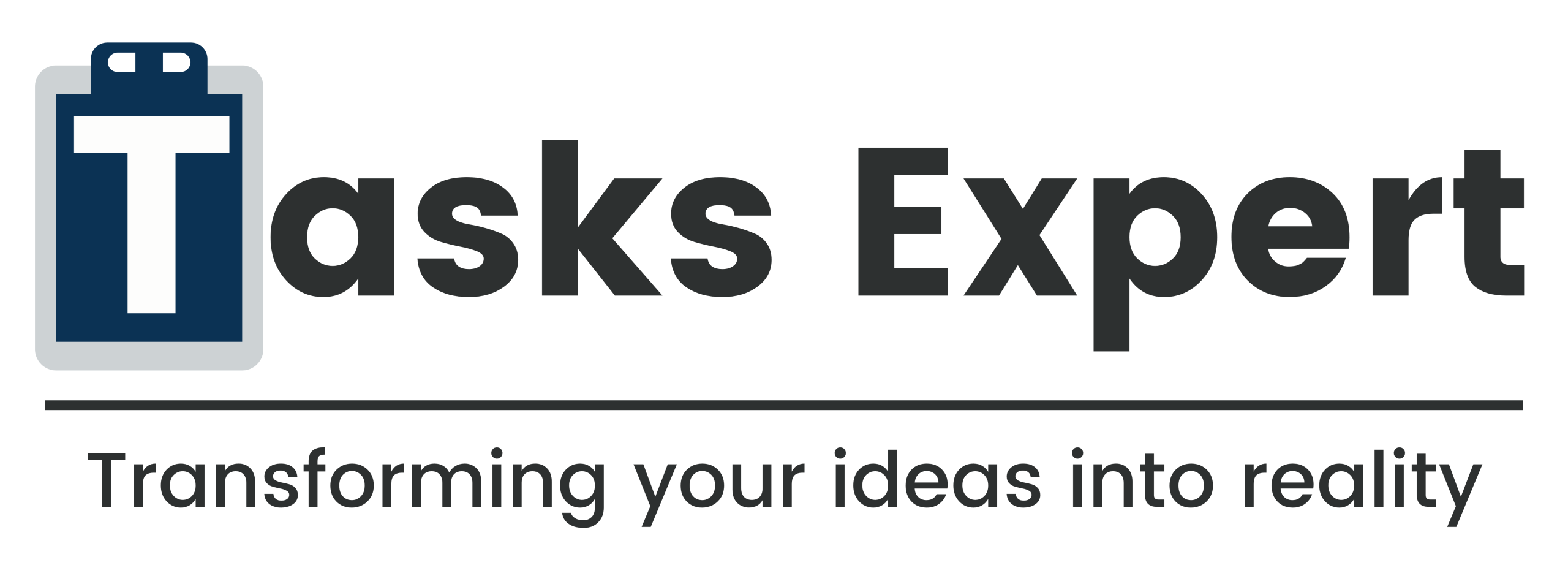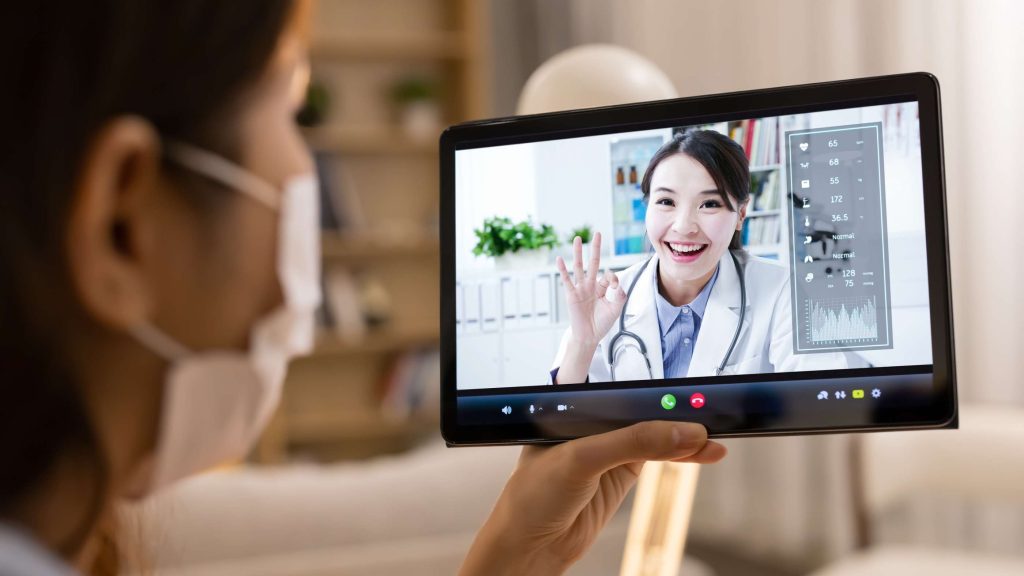Introduction
No matter if you’re a doctor, a startup entrepreneur, or a designer of digital health solutions, the growth of telehealth is undeniable. But today’s patient demands a click or two, and facilities are being pressured to adopt approaches that meet the convenience, safety, and quality requirements of today’s healthcare consumer. Enter Healthcare Development Services (HDS).
Telemedicine goes beyond just video visits. It is a complex world that includes secure systems, digital health platforms, patient engagement tools, and certified medical software. With the help of healthcare IT solutions and tailored healthcare software, companies can provide scalable care.
In our latest blog, we’ll dive into how Healthcare Development Services are the foundation to telemedicine and go into how they make scalable systems, ensure compliance, drive patient engagement, and embrace the cutting edge. Get perspective on the current landscape and future directions, and learn how technology is redefining the future of patient care.
The Evolution of Telemedicine and Reliance on Health Care Development Services
Telemedicine has gone from a sideline option to a cornerstone of health care. Early on, remote care was limited to basic phone consults. Today, with sophisticated Healthcare Development Services, it has evolved into completely integrated platforms that can do everything from video consults to real-time monitoring.
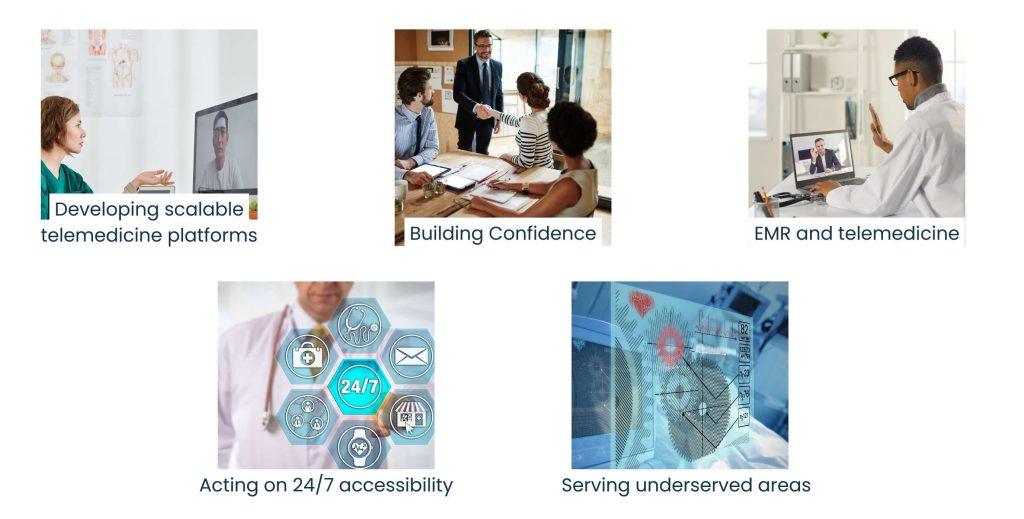
Here’s how the development of health care has fueled this transformation:
- Developing scalable telemedicine platforms: Today’s bespoke healthcare apps can conduct millions of consultations worldwide without breaking a sweat.
- Building Confidence: Trust this software as it is designed to keep your health record confidential.
- EMR and telemedicine: Data sharing between EMR and telemedicine apps is made possible by digital health tools.
- Acting on 24/7 accessibility: The Health apps have enabled patients to schedule, consult, and monitor doctors at any place and at any time.
- Serving underserved areas: Hosting healthcare IT in the cloud enables medical expertise to reach remote regions, rural communities, and underserved areas worldwide!
The telemedicine service would be fragmented without this strong technology base. Instead, HDS developed a built-in infrastructure that healthcare providers can grow with while patients receive reliable, high-quality care.
Benefits of Healthcare Development Services in the area of Telemedicine
The potential for telemedicine is not only about convenience; it’s redefining how patients and providers engage. Healthcare Development Services help organizations achieve quantifiable gains.

- Enhanced access: Patients can access specialized wards and experts for timely care delivery.
- Cost savings: No need for expensive, time-consuming underground expansion or other development.
- Improved patient activation: Solutions offer reminders, notifications, and individualized dashboards that keep patients engaged in their healthcare experience.
- Data insight: Custom healthcare software with advanced analytics features allows for pulling insights into trends and outcomes.
- Regulatory compliance: Developers build systems that adhere to standards like HIPAA, GDPR to lower risk for providers.
And it’s such a win-win proposition. Patients get more care and less friction, and healthcare providers get efficiency, compliance assurance, and a way to scale. As the battle for customers rages in the healthcare industry, these benefits are many times make it or break it assets for a company in the digital era.
Telemedicine Challenges and How They Are Solved by Healthcare Development Services
Telemedicine presents not only opportunities but also challenges. Providers have to work against this failure to get care that is dependable. It touches all those sore spots that HDS addresses head-on.
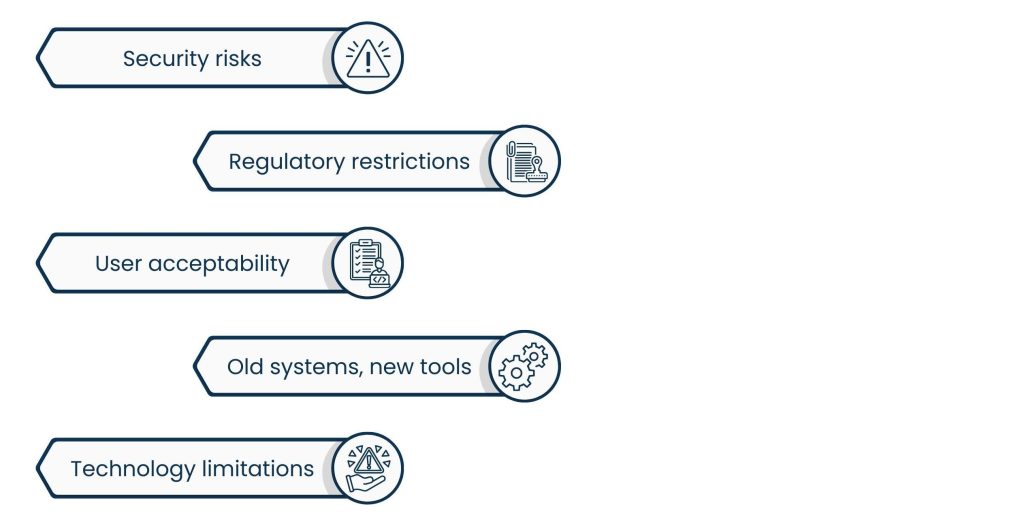
Security risks:
Because telemedicine is built on sensitive health data, security is paramount. When developers are adding encryption to secure information in transit, and multi-factor authentication makes sure that only authorized users can access their accounts. Thanks to secure cloud hosting, patient records are secure, putting trust between providers and patients on good terms of collaboration and trust.
Regulatory restrictions:
Healthcare is tightly regulated regarding compliance (e.g., HIPAA in the U.S.) and data privacy (e.g., GDPR in the EU). Providers can find it overwhelming to navigate these requirements. A flow of dollars toward companies offering compliance as a service would just be the beginning: Through inclusion of compliance in the development of healthcare software, businesses can execute across regions with the confidence that their telemedicine systems satisfy the requirements of law and virtue.
User acceptability:
Many patients do not want to go from what they are used to doing, being in front of a professional, to doing it on a platform. So to remedy this, developers create healthcare apps that have clear instructions, a simple sign-up, and are user-friendly. This not only minimizes friction but also helps to minimize the scare-factor of virtual care, which will help enable it to become more mainstream.
Old systems, new tools:
Many hospitals run on out-of-date electronic health record systems that don’t interoperate gracefully with new tools. Healthcare IT solutions, however, fill this gap with the use of APIs and integration layers in order for the new telemedicine apps and infrastructure to seamlessly communicate.
Technology limitations:
Not all patients have access to high-speed internet or smartphones. That’s why developers create lean telemedicine applications that operate smoothly on low-bandwidth devices. This expands the care in remote locations without digital differences.
Healthcare Development Services turn barriers into opportunities for innovation. The outcome is a working telemedicine ecosystem that is trusted, inclusive, and sustainable.
Future of Telemedicine with Healthcare Development Services
The next wave of telemedicine will very much rely on how fast providers adopt sophisticated healthcare services. With the tech industry having an increasing influence on healthcare, telemedicine will grow to be much more than a glorified video chat and evolve into an end-to-end system of predictive, personalized, and hyper-securitized digital care.
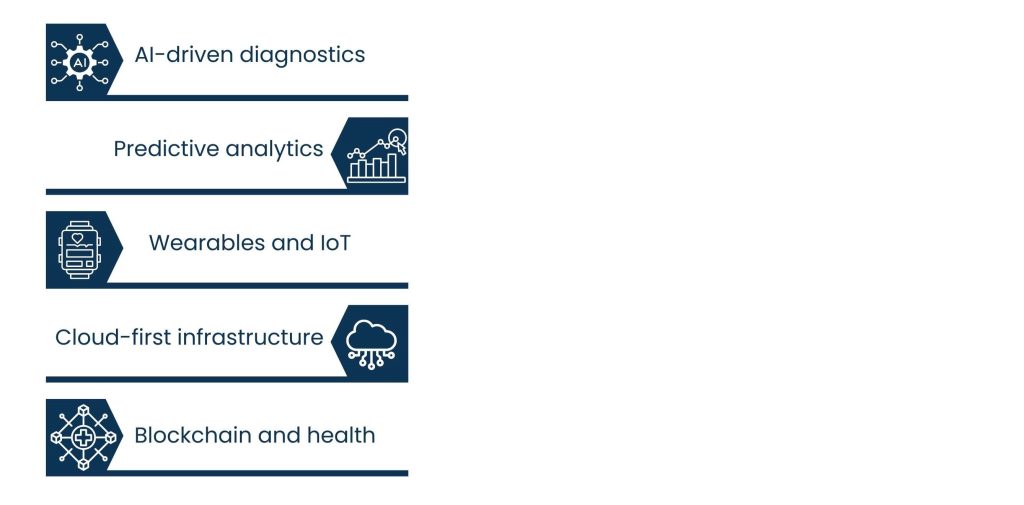
Several of these are already starting to lay much of this foundation:
AI-driven diagnostics:
Artificial intelligence is playing an important role in telemedicine. It helps physicians tailor recommendations based on evidence and experience. It also cuts down response time, helping the doctors to see more patients more accurately in less time.
Predictive analytics:
Healthcare Development Services are enabling the integration of predictive models into telemedicine platforms. Models such as these can predict patients’ needs through the detection of risk factors and trends in a proactive manner.
For example, predictive markers could alert a provider to the early warning sign of the onset of symptoms of complications in a patient with a chronic disease, and that can be addressed before the conditions have already developed beyond the possibility of return to normal, rather than have a status quo response.
Wearables and IoT:
When a healthcare mobile app grows into more advanced devices like smartwatches and fitness trackers, it expands its capabilities. With around-the-clock monitoring that includes everything from heart rate and oxygen levels to blood pressure, doctors can track patients’ overall conditions. This can inform timely intervention and encourage a presymptomatic view of patient health.
Cloud-first infrastructure:
As an increasing number of patients turn to telemedicine, scalability is key. Cloud-based healthcare IT services allow storage and security of tremendous amounts of patient data, and they also permit providers to scale services globally without any interruption. Cloud platforms also guarantee reliability and speed, whether for telemedicine apps, wherever the patient is.
Blockchain and health:
Security will continue to be a keystone restraint in the growth of telemedicine. Blockchain applications offer transparency and immutability to patient records, and tampering with them becomes almost impossible. This cultivates trust among patients and across border care providers, for whom reliable exchanges of data are essential.
Collectively, these technologies herald a future in which telemedicine is not only reactive but also proactive, personalized, and globally ubiquitous. The institutions that embrace Healthcare Development Services to apply these technologies drive innovative delivery for the digital age.
How Telemedicine Can Increase Patient Engagement in Development Services?
Patient engagement will be one of the most important factors influencing the success of telemedicine platforms. The truly engaged patient is more likely to stick to a treatment and turn up for follow-up appointments, and enjoy better results. Healthcare Development Services play a central role in building tools that facilitate engagement by creating intuitive, interactive, and patient-centered online experiences.
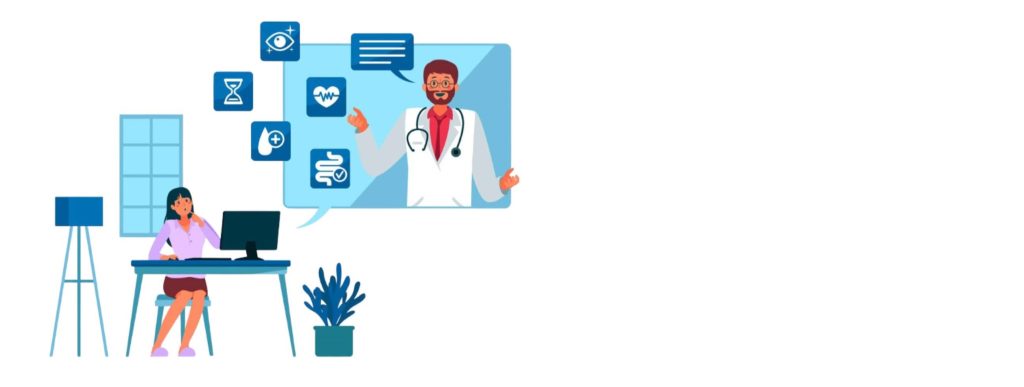
Appointment reminders:
No-shows for appointments are particularly problematic in health care. Developers can also build the API into telemedicine apps to have the reminders sent as automated SMS, email, or push notifications. Release these to negate no-shows, but also allow patients to rebook if needed.
Education:
Some telemedicine programs include lifestyle coaching and individually tailored health education in addition to information on a wide range. What these programs will do is explain thoroughly to the patient where they can connect the dots about their issue and might do preventatively.
Two-way communication:
Secure messaging in telemedicine platforms lets patients ask questions without needing to book an appointment. This encourages ongoing confidence between patients and providers as unneeded visits are eradicated.
Health tracking:
Custom apps could integrate tracking tools for logging symptoms, meds, and daily vitals. Doctors receive all that data, and it enables them to have more context, as well as give patients a sense of control over their healthcare journey.
Health Checkers’ gamification value propositions:
Deployed systems apply game play methods such as prizes or just progress bar animation to motivate the patients to complete the medical exercises, to follow the course of therapy, or to take scheduled medicine. And this interactive experience extends far beyond the time of their visit for patient engagement.
Telemedicine is more than a service to access on-demand remote consultations; it is an interactive platform that maintains long-term patient relationships. Better engagement means stronger loyalty.
Why Partnering with Professional Healthcare Development Teams Matters?
While the correct technology is crucial, so too is the experience behind it. Numerous healthcare institutions miscalculate the effort required to build secure, scalable, and compliant telemedicine solutions. Collaboration with expert teams who offer Healthcare development Solutions helps guarantee that the deployment is not only successful but sustainable in the long run.

Know How:
Domain knowledge:
Developers have extensive knowledge of health care workflows, compliance needs, and patient expectations. They know the difference between building yet another general-purpose app and creating a healthcare-grade platform that saves lives.
Full-cycle services:
The great partner can provide all stages of development: from idea validation and UX design to release and post-launch support. This consistency minimizes lag time and avoids expensive errors.
Personalization:
Each provider is unique in practice and function. If so, expert teams provide customized solutions that work with what the company already has and what the company wants to accomplish, rather than trying to make it conform to everyone else.
Regular updates:
The laws and regulations imposed on health care, as well as how patients want to consume it and what technology can support, never stop evolving. Development Partners offer continuous updates so systems are always compliant, safe, and current.
Scales Of Support:
It’s not just telemedicine that will expand. Experienced teams invest time in developing systems that can be scaled with demand, so that post system launch, the service provider can grow the service without having to change out the players.
Picking the right partner is not a technical decision, but a strategic one. Hospitals that partner with Healthcare Development Services, a professional healthcare development partner, can rest at ease with their telemedicine framework which is robust and secure, ensuring that it keeps them ahead of the competition in the medical field. This collaboration allows organizations to concentrate on what they do well–caring for patients.
Conclusion
Telehealth has swiftly evolved from an add-on to an essential service. Today, patients value convenience, speed, and personalized attention, and it’s only through Healthcare Development Services that providers can meet these expectations regularly. Those services construct the backbone of the telemedicine workflow from secure data handling and patient engagement platforms to analytics and AI-based tools.
The power of such services, they say, is that they solve the twin issues of scalability and trust. Providers need systems that can scale with demand and also remain in compliance with some of the strictest regulations, and patients need platforms that they feel comfortable and safe on. In resolving these issues, HDS develops a suite of solutions for both sides.
The future of healthcare is going to be more digital-first. Communicating with your doctor will also become more predictive and personalized. The bottom line is, when we invest in a healthcare infrastructure like this, healthcare organizations can spend less time chasing change and have the power to lead it, taking access and patient-focused care to a new level.
About Us
Tasks Expert offers top-tier virtual assistant services from highly skilled professionals based in India. Our VAs handle a wide range of tasks, from part time personal assistant to specialized services like remote it support services, professional bookkeeping service etc. Furthermore, it helps businesses worldwide streamline operations and boost productivity.
Ready to elevate your business? Book a Call and let Tasks Expert take care of the rest.




